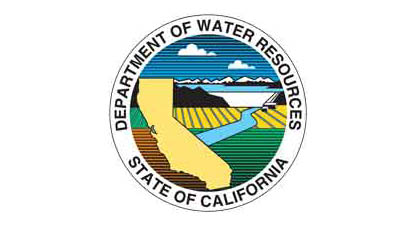December 29, 2010

On the heels of early season storms, manual and electronic readings indicate that water content in California’s mountain snowpack is 198 percent of normal for the date. “This boosts our hopes that we will have an adequate water supply for our cities and farms as we continue to shake off effects of the 2007-2009 drought,” said DWR Director Mark Cowin.
Before the readings, DWR estimated that it would be able to deliver 50 percent of requested State Water Project (SWP) water in 2011. The early projection equals the amount delivered this year, and is all-but-certain to increase as hydrologic conditions continue to develop. The final amount delivered to 25 million Californians and nearly a million irrigated acres of farmland will largely depend on weather between now and spring. Deliveries were 60 percent of requests in 2007, 35 percent in 2008, 40 percent in 2009, and will total 50 percent of the 4,172,126 acre-feet requested this year. The last 100 percent allocation – difficult to achieve even in wet years because of pumping restrictions to protect threatened and endangered fish -- was in 1996.
Most of the state’s major reservoirs – bolstered by early rains with the spring snowmelt still to come – are near or above normal storage levels for the date. Lake Oroville in Butte County, the State Water Project’s principal reservoir, is at 95 percent of normal, holding 2,099,731 acre-feet. Lake Shasta north of Redding, the federal Central Valley Project’s (CVP) largest reservoir is at 119 percent of normal, holding 3,421,013 acre-feet. The CVP’s Folsom Lake near Sacramento is at 90 percent of normal, holding 428,933 acre-feet. Lake Oroville, heavily dependent on the spring and summer snowmelt, last filled to its 3.5 million acre-foot capacity in the summer of 2003.
Snow surveyors from DWR and cooperating agencies manually measure snowpack water content on or about the first of January, February, March, April and May, augmenting and checking the accuracy of electronic readings taken throughout the winter by sensors up and down the mountain ranges. Results of today’s manual readings by DWR off highway 50 near Echo Summit are as follows.
The electronic readings show snow water equivalents in the state’s northern mountains at 169 percent of normal for the date and 57 percent of normal for April 1, generally the peak date for snowpack water content. Readings for the central mountains are 180 percent of normal for the date, and 61 percent of the April 1 average. The numbers for the southern mountains are 261 and 78.
Last year on this date, electronic readings indicated that water content in the statewide snowpack was 85 percent of normal for the date and 28 percent of the April 1 average. The readings were 77 percent and 26 percent for the northern mountain ranges; 83 and 28 percent for the central mountains, and 100 and 30 percent for the southern mountains.
Northern California snowpack readings are taken from the Trinity River basin through the Feather and Truckee river basins. Central mountain readings extend from the Yuba River and Lake Tahoe basins through the Merced and Walker river basins. The southern measurement zone is from the San Joaquin River, Mono Lake and Owens Lake basins to the Kern River basin.
The Alpha, Phillips Station, Lyons Creek and Tamarack Flat sites are in the central mountain measurement zone.
Electronic Sensor Web Sites
Readings from snowpack water content sensors are posted at http://cdec.water.ca.gov/cgi-progs/snow/DLYSWEQ
http://cdec.water.ca.gov/cgi-progs/snow/DLYSWEQ
Historic readings from snowpack sensors are posted at
http://cdec.water.ca.gov/cgi-progs/rpts1/DLYSWEQ
http://cdec.water.ca.gov/cgi-progs/rpts1/DLYSWEQ
Reservoir levels may be found at these sites
http://cdec.water.ca.gov/cdecapp/resapp/getResGraphsMain.action http://cdec.water.ca.gov/cdecapp/resapp/getResGraphsMain.action
http://cdec.water.ca.gov/cgi-progs/reservoirs/RES <http://cdec.water.ca.gov/cgi-progs/reservoirs/RES
Importance of Snow Surveys
Snow water content is important in determining water supply. The measurements help hydrologists prepare water supply forecasts as well as provide others, including hydroelectric power companies and the recreation industry, with critical data. Monitoring is coordinated by the Department of Water Resources as part of the multi-agency California Cooperative Snow Surveys Program. Surveyors from more than 50 agencies and utilities take readings at hundreds of snow measurement courses.
You May Also Like




